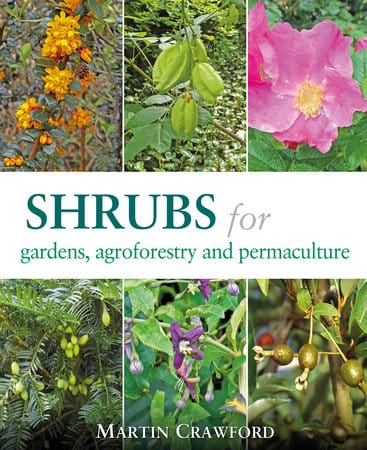Shrubs for Gardens, Agroforestry, and Permaculture
Paperback
$31.95
A range of useful shrubs for different niches, sites, and functions–in gardens and on homesteads and farms.
World-renowned expert Martin Crawford covers common fruit bushes like currants and gooseberries, and includes many other less-known shrubs with edible fruits, nuts, leaves, or other parts. He takes us on a journey into the world of exotic spice trees, shrubs with medicinal parts, and plants that fix nitrogen to help fertilise other plants. All these can be grown in temperate climates, diversifying our diets, enabling us to design beautiful, productive gardens, as well as showing us how we can integrate agroforestry into our smallholdings and farms to create new income streams. Despite increasingly urgent calls from scientists, the not-fit-for-purpose economic and political systems we live in cannot be relied upon to implement the carbon emission reductions needed. This is where we come into it: whether we are farmer, gardener or plant dabbler, by planting shrubby plants that sequester carbon, we can minimise our carbon footprint and ideally live a carbon-negative life. On a broadscale, perennial and woody species are the way forward to reduce carbon emissions in agriculture. Woody crops sequester carbon in their biomass, but can also be grown in systems that allow for sequestration of large amounts of carbon into the soil.








